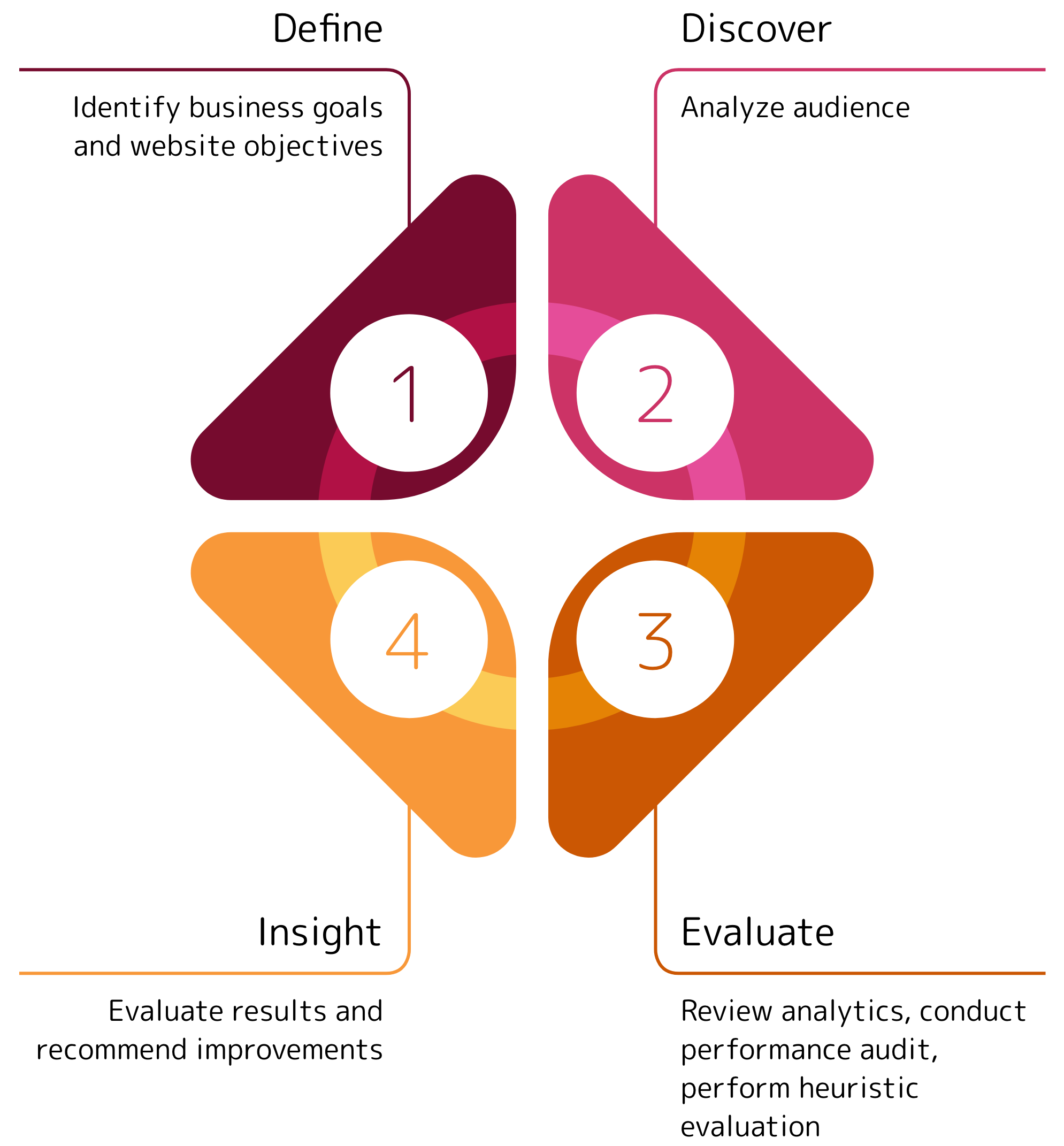- What is a UX audit?
- What are the benefits?
- When should you conduct a UX audit?
- What does it involve?
- How much does a UX audit cost?
- Turning recommendations into results
What is a UX audit?
The goal of a User Experience (UX) Audit is to identify usability issues and provide recommendations to improve the overall user experience. It can be used to answer the following questions:
- What opportunities exist to produce better outcomes for the user and the business?
- What could be causing frustration with visitors?
- Are there gaps in the current metrics being collected?
- What do the analytics tell us about user behaviour?
- Which improvements would have the biggest impact on the user experience?
What are the benefits?
A UX audit not only identifies potential problems but uses data to get to the root cause of why the issues are occurring. When it comes to your website, making decisions based on intuition can lead to lacklustre results. Using data to truly understand a problem, provides insight that leads to more effective solutions.
Implementing UX audit recommendations will enhance the usability of your website which can lead to a whole host of benefits—from improved customer satisfaction to increased conversions and sales.
When should you conduct a UX audit?
UX audits are like health check-ups for your website, they can be beneficial at just about any time. They’re especially useful to undertake prior to your budgeting process because it can help in prioritizing where and how to spend your web development dollars.
What does it involve?
There’s no official methodology for conducting UX audits. The process will vary based on the available time, budget and requirements of the audit. At Elev8, we’ve broken down the process into four key phases:

Phase 1: Define
As with just about any project, the first step is to identify your business goals and how your website can best support them. This can be done using an online survey to gather information from key company stakeholders, or through one-on-one interviews. The later approach often produces more meaningful insights.
Phase 2: Discover
The next step is to develop a solid understanding of who your users are. It’s also important to determine if your current user base is the audience you’re actually looking to target. The activities in this phase will depend on the level of knowledge you have on these groups and, whether more research is needed. The end deliverable here is the development of user personas that will not only inform the rest of the audit process, but help in supporting many other forms of decision making in your organization.
Phase 3: Evaluate
The bulk of the audit efforts takes place in the Evaluate phase. The following:
- Analytics Review: Helps determine who’s interacting with your site and how. Advanced data from heat maps, visitor recordings, polls, user testing and other analytic tools, can go the extra mile in gaining deep behavioural insights.
- Performance Review: A look at your website’s performance helps to identify any potential areas of concern around performance, accessibility and search engine optimization (SEO).
- Heuristic Evaluation: A process where a UX expert evaluates your website to determine how well it stacks up against usability heuristics—specifically Jakob Nielsen’s 10 general principles for interaction design.
Phase 4: Insight
The final step is to collect and synthesize the findings, compile the results, and determine quick wins and enhancements that could have the biggest impact on improving the user experience. Those actionable recommendations are then scoped by our development team so clients have all the information they need to make informed decisions about where and how to allocate their website investments.
How much does a UX audit cost?
The cost of a UX audit can vary based on the scope of work. At Elev8, our Basic UX Audit is $1,000 and can typically be completed in 1 week or less. If there are additional needs like user research or usability testing, we’ll provide an estimate up front and then work together to prioritize the activities that fit within your budget. The audit cost does not include implementation of any recommended actions so additional budget and/or resources will be needed. This is why conducting a UX audit prior to your budgeting process can be helpful in determining what to allocate towards your website.
Turning recommendations into results
Regular UX audits are critical in determining how well websites align with user experience. But in order for those valuable insights to have tangible benefits, they must be acted upon. It can mean the difference between a website that underperforms and one that surpasses expectations
Questions?
If your website needs some improvements but you’re not sure where to start, a UX audit is your answer! Get in touch if you’d like to learn more.


